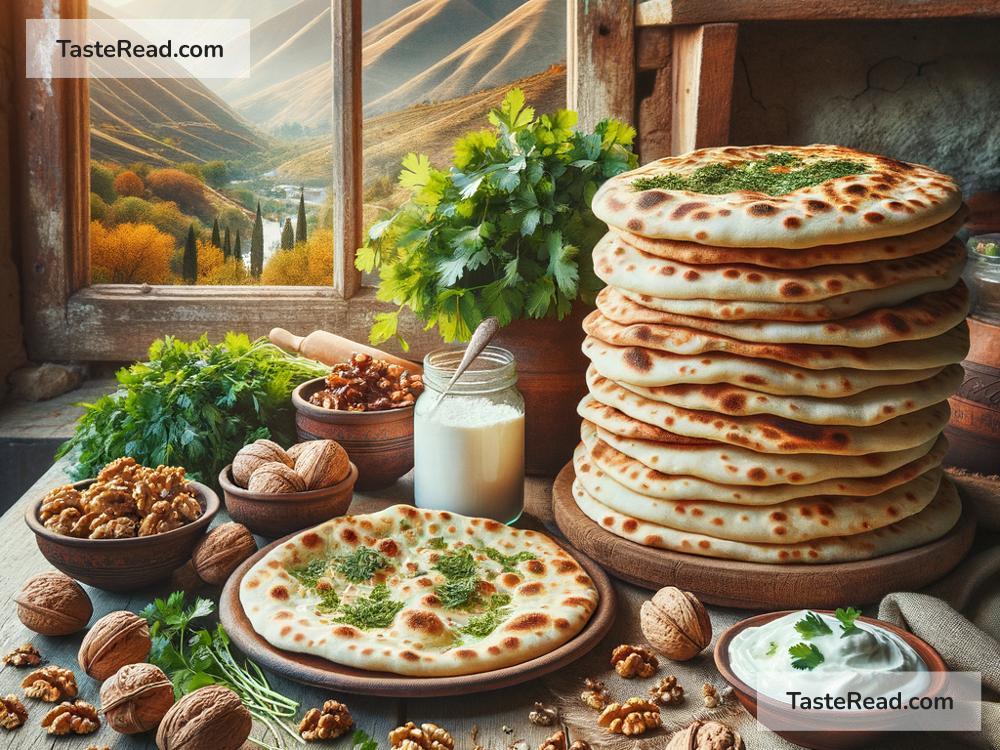Celebrating the Heritage of Artisan Flatbreads in Armenia
Armenia, a beautiful country in the South Caucasus, has a rich history, culture, and cuisine. One of the most loved and iconic foods in Armenian culture is the artisan flatbread known as lavash. This traditional bread is much more than just food—lavash tells the story of Armenia’s heritage, its people, and their way of life. In this blog article, we will explore the beauty of Armenia’s flatbread traditions and why they are worth celebrating.
What Is Lavash?
Lavash is a thin, soft flatbread made with simple ingredients: flour, water, and salt. It is the centerpiece of Armenian meals and has been a staple of the local diet for hundreds of years. Lavash often serves as a wrap for meats, vegetables, and cheeses, but it is also enjoyed on its own or with spreads like butter, jam, or yogurt.
The process of making lavash is as unique as the bread itself. Traditionally, it is baked in a tonir, an underground clay oven. The dough is rolled out thin, stretched over a cushion, and slapped onto the walls of the tonir where it bakes quickly. Watching skilled bakers prepare lavash is a fascinating experience that gives insight into Armenian culture.
A UNESCO Cultural Treasure
Lavash is not just a food in Armenia—it is a symbol of connection, family, and tradition. In 2014, UNESCO recognized lavash as part of the “Intangible Cultural Heritage of Humanity.” This designation celebrates the role of lavash in Armenian culture and its importance in everyday life. Armenian families consider lavash to be sacred, and it often takes center stage at weddings, religious ceremonies, and family gatherings.
The recognition also highlights how lavash-making is a communal activity. Creating lavash often involves several people working together, from kneading the dough to baking and stacking the bread. This shared process strengthens bonds between family members and neighbors and preserves the techniques that have been passed down through generations.
The History of Armenian Flatbreads
Flatbreads like lavash are deeply rooted in Armenian history. Scholars believe that flatbreads may have been among the earliest breads ever made. The simplicity of flatbreads made them practical for ancient people who needed food that was easy to prepare, store, and transport.
Armenians have carried the tradition of flatbread-making through centuries, despite challenges such as wars and natural disasters. Lavash has been a source of comfort during difficult times, providing a sense of home and continuity. It is even said that lavash often accompanies Armenian soldiers, travelers, and farmers, thanks to its durability when dried.
How Lavash Is Enjoyed Today
Lavash has evolved over time, but it remains a central part of Armenian cuisine. Today, lavash is used creatively in many dishes. It can be rolled into wraps, layered in khorovats (Armenian barbecue), or torn into pieces for dipping. In rural areas, dried lavash is softened with water and served with hearty stews or soups.
Beyond Armenia, lavash has gained popularity in many countries. Its versatility makes it appealing to people around the world who appreciate its mild flavor and soft texture. You can now find lavash in supermarkets and restaurants as a healthy alternative to other types of bread.
The Role of Women in Lavash-Making
Lavash-making in Armenia is often associated with women. In many families, the skill of baking lavash is passed down from mothers to daughters. Women gather together to make large batches of lavash in preparation for special events like weddings or holidays. These gatherings are filled with laughter, conversation, and teamwork, making the process joyful and memorable.
By teaching younger generations, Armenian women ensure that the tradition of lavash-making continues to thrive. Their dedication to preserving this cultural heritage reflects the strength and love that hold Armenian communities together.
Celebrating Heritage Through Food
Armenian flatbreads like lavash are more than just delicious—they are a reminder of the country’s heritage, resilience, and community spirit. Every fold, every stretch, and every bake of lavash celebrates the connection between generations. It is a tribute to the past and a promise for the future.
For Armenians, food is not just about nourishment—it is about storytelling. Sitting around a table with lavash and other dishes allows Armenians to share stories, celebrate traditions, and cherish the bonds that unite them. Visitors to Armenia often leave with not just a taste of lavash but also a deeper appreciation of Armenian culture and hospitality.
Preserving the Tradition
As Armenia continues to modernize, some worry that traditional lavash-making might decline. Industrial bakeries can now produce lavash faster and more efficiently, but nothing can replace the authenticity, love, and heritage that go into handmade lavash.
Preserving lavash-making traditions requires support from families, communities, and even travelers who admire its cultural significance. By continuing to value handmade lavash, Armenians can keep this beautiful tradition alive for future generations.
Conclusion
Armenian artisan flatbreads, especially lavash, are much more than food—they are a celebration of heritage and community. From ancient times to today, lavash has connected people, strengthened families, and represented the resilience of Armenian culture. Whether you enjoy lavash in Armenia or abroad, you are taking part in a tradition that has unfolded across centuries.
So, the next time you taste a piece of lavash, think about the hardworking bakers, the family traditions, and the stories that shaped this iconic flatbread. Lavash is not just bread—it is Armenia’s heart, shared with the world.


